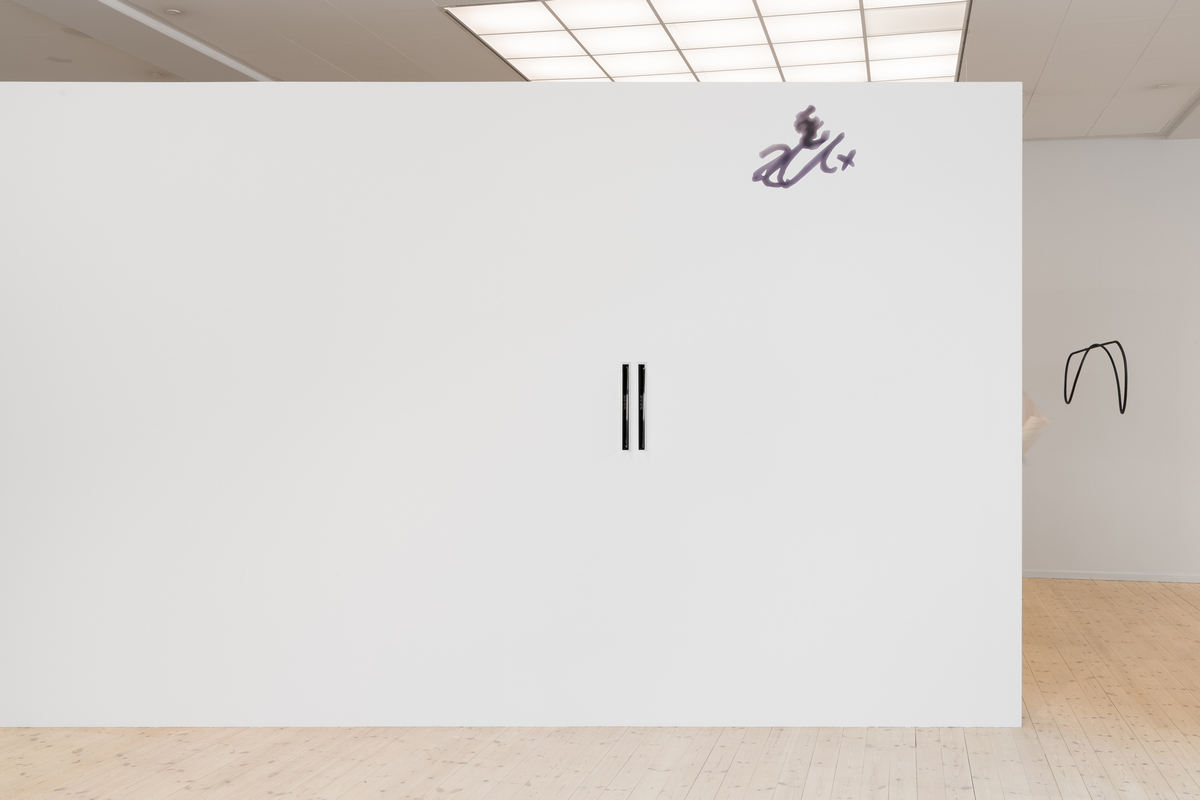SPRING is the Artists' Easter Exhibition talent show with a handful of artists who in recent seasons have made a strong impact on the juried exhibition KP.
SPRING20 is like KP20 postphoned for one year and will be on display 21 - 29 April 2021 in Kunsthal Aarhus.
Open every day at 11-19 including Monday 26 April.
Corona passes are required to enter Kunsthal Aarhus.
Artists at SPRING20
Marie Kaarøe (KP18)
Pascal Mayet (KP17)
Kamilla Mez (KP19)
Olivia Willman (KP19)
Supervisor: Marianne Jørgensen
Marie Kaarøe
(born 1971) lives and works in Aarhus, DK.
Arkitekt m.a.a. Arkitektskolen i Aarhus 1991-1997
Aarhus Kunstakademi 2016-2020
@marie.kaaroe.art
Practice
My practice unfolds in a dynamic tension between drawing and sculpture. The works stem from the attempt to combine these two forms of expression and originate in the concepts of scale, measurement and volume. As individuals we move around here on Earth, consciously or unconsciously registering everything around us, on the basis of our own body and physicality. Each one of us is our own roving measuring stick and whether the measurements that surround us are theoretical or real, we nonetheless relate them to the physical space our body creates. In other words, it is the human perception of the world that I am trying to interpret in precise and conceptual works that simultaneously contain complexity and numerous possible meanings.
Work info
Kilo(Kubik)Meter (100 x 100 x 100 cm - 1000 meters parashute line, steel)
I + I + I (220 x 200 x 30 cm - Pencil on paper, mdf)
Pascal Mayet
(born 1980, Sweden) lives and works in Copenhagen.
Det Fynske Kunstakademi, 2009-2014
Intermedia, The Hungarian University of Fine Art, 2011-2012
Interaktive medier, Designskolen Kolding, 2007-2009
pascalmayet.com
Practice
Pascal Mayet is an interdisciplinary artist who works serially with drawing, painting, text, installation, performance and sound.
His works are based on the sense of the experienced, and a major part of his practice takes place in the public arena. Through a poetic language he examines the connections between people and and their political, economical, environmental and cultural realities.
It is the interaction between these realities that interests him, where he places equal emphasis on the external space as on our own inner space where we feel, think and remember.
Pascal is interested in how these spaces affect us, but also in how we can affect them.
Kamilla Mez
(born 1993, Berlin) lives and works in Aalborg.
BA Art & Technology, Aalborg Universitet 2016-19
www.kamillamez.com
@kamilla.mez
Practice
Kamilla Mez works primarily with themes of digitality, society and space, where she often links particular information from one place to another; addressing some of the many challenging dynamics of the social and political aspects existing at the boundaries of different types of spaces, between public and private or physical versus virtual. She deals with the dominating mediums through a language of elusive, parenthetical meanings that engages itself through the use of modern technology, installation and performance, which in their composition often demand a prior investigation. The investigation of the dynamics of spatial boundaries is important because they play out and affect cultural production and lived experience. Kamilla Mez works with what happens between the digital and arch-material, subtle objects and social profiles, enabling the expansion of an invisible knowledge.
Olivia Willman
(born 1996, Copenhagen) lives and works in Aarhus.
Det Jyske Kunstakademi 2017-22
@olivia_willman
Practice
Olivia Willman’s practice almost always results in sculpture or installations. Whether as a large single sculpture or a small hand-made element, there is always a connection between the material and its interaction with the surrounding world.
Temathically, Willmans works predominately with various forms of mysticism. In her approach to mysticism she maintains an affinity with a substanstial, almost forgotton cultural heritage specifically connected to Scandinavia, as a spirtual juncture between the Middle Ages and our present.
The purpose of SPRING is
- to highlight significant artistic expressions and investigations that may otherwise have difficulty finding a public platform
- to support the individual artist in his/her career
- in a wider perspective, to strengthen the upcoming arts
SPRING has three major focus
- Care of talent: Early on in the process, the artists are assigned a qualified supervisor who advises on the individual works. Artists and supervisors collaborate on the overall exhibition and on the form and content of a catalogue.
- Exchange: A platform is created for new networks and collaborations artists in between.
- Communication: The relationship between works and the audience is developed by publishing catalogues, handouts, launching public talks, etc.
























